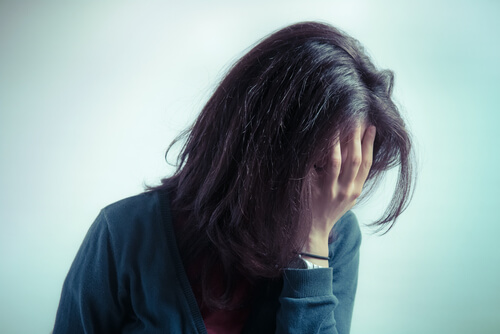Environmental Anxiety: What Is It Exactly?

Unless you’ve spent the last five years of your life hiding in a cave, you surely know who Greta Thunberg is. If you don’t know who she is, basically, she’s a 17-year-old environmental activist who’s incredibly passionate about saving the planet from climate change. By hearing her speech and observing everything she does, we’re wondering if she may be suffering from environmental anxiety. Is this possible?
Well, the truth is that we don’t have a proper answer. And the reason for this is that, scientifically, there’s no psychological condition per se called environmental anxiety. However, in 2019, a group of experts from the Climate Psychology Alliance coined this term to refer to a phenomenon that, far from being a pathology, can be considered a real and rational concern.
What’s environmental anxiety?
Let’s simplify the term as much as possible. Basically, environmental anxiety refers to the concern for the natural habitat we reside in. This includes habitat destruction, climate change, pollution, and all ecological problems and disasters caused or reinforced by the action of human beings and their productive activity on the planet.
People who suffer from these worries feel anxious when thinking about their own mortality, as well as their loved ones’. Furthermore, thinking about the future of the world makes them incredibly uneasy.
However, it’s important not to confuse this with a clinical anxiety disorder. As we mentioned above, this isn’t considered a pathology nor does it present a specific clinical picture.
Nonetheless, the American Psychological Association (APA) defined this term in 2017. According to them, this chronic fear of environmental fatality could worsen existing mental health problems or trigger previously non-existent ones.
The aforementioned American association states that there was a general increase in environmental anxiety in 2019. This is due to the natural disasters that happened and the media impact they had.
“We’re living on this planet as if we had another one to go to.”
-Terri Swearingen-

Climate and mental health
Climate has a direct impact on everyone’s mind. Some individuals feel affected by what’s currently happening. Others, on the other hand, worry more about what’s to come. For example, the fact that certain islands may be completely submerged in a few years due to climate change is extremely worrisome for them.
However, both case scenarios can cause various sensations. For instance, anger, shock, or terror, and all of these emotions, more or less intensely, can lead to post-traumatic stress disorder.
Furthermore, the consequences of climate change influence economic and social activity. Natural phenomena can affect industries such as agriculture, livestock, and many infrastructures. This, as a consequence, can cause feelings of fatalism, impotence, and various types of mental disorders.
The scientific journal Global Environmental Change posted a study that linked depression and anxiety to the environment. In fact, when it comes to environmental anxiety, the most affected individuals are women and people with low incomes. However, there are still no clear data in this regard.
What do we know about those affected?
First of all, there are certain types of anxiety one could say are unfounded or disproportioned fear (when comparing it with the magnitude or probability of the threat). However, when speaking from an ecological point of view, this is a real problem.
Moreover, this feeling of insecurity becomes a natural response due to the restlessness it provokes. Additionally, according to the data that supports the existence of the problem, these factors are especially noticeable in women. The reason for this is that women tend to be much more concerned about pollution, global warming, or climate change. In fact, a lot of them consider that it could even affect their fertility.
Furthermore, environmental anxiety also affects young people in an intense manner. Teens, young adults, and even children show a greater connection to the environment and a high concern for their future. Nonetheless, middle-aged adults are concerned about this problem due to the impact it can have on their children’s development.

Is there a solution for environmental anxiety?
Fortunately, there’s still time to mitigate this type of anxiety. It’s safe to say that, if it continues like this, it could become a serious problem for many human beings. For this, the best solution would be to change social and economic behaviors, avoid compulsive consumption and commerce, and begin to implement greener forms of energy.
In addition to this, it’s also necessary to develop resilience, which can go along balanced and environmentally friendly policies that can have a positive effect on the human psyche.
Turning to healthier habits, such as less use of cars or spending more time in nature, will also allow you to improve your environmental anxiety. It’s up to you!
All cited sources were thoroughly reviewed by our team to ensure their quality, reliability, currency, and validity. The bibliography of this article was considered reliable and of academic or scientific accuracy.
Burns, D. (2012). Adiós, ansiedad. Paidós Editorial: Barcelona
Kormondy, E. (1978). Conceptos de Ecología. Alianza Editorial: Madrid
Albrecht G, Sartore GM, Connor L. (2007). Solastalgia: The distress caused by environmental change. Australasian Psychiatry.
American Psychological Association / eco-America (2017). Mental health and our changing climate: impacts, implications, and guidance. Washington, DC: APA
This text is provided for informational purposes only and does not replace consultation with a professional. If in doubt, consult your specialist.








